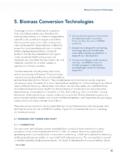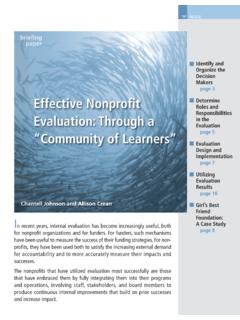Transcription of A Kindergarten Inquiry Unit
1 A Kindergarten Inquiry unit : Nothing But Nets Written by Cheryl Russo Dr. Emily Alford Holy Family catholic Academy 2515 Palatine Rd Inverness, IL 60067 Archdiocese of Chicago, IL unit Overview: description of Kindergarten challenge Kindergarten students will receive a special letter from the NothingButNets and the Foundation asking them to help tell people about malaria and how to end this terrible disease. Attached is a curriculum plan for an Inquiry mini- unit that focuses on insect characteristics, how those characteristics help animals survive, and ways in which people can be protected from some harmful animals like the mosquito.
2 The lessons are designed to stand alone or to enhance a primary unit on insects, usually taught across the United States in Kindergarten or first grades (1, 2). The attached curriculum meets the content established by Illinois State Goal 12; Know and apply concepts that explain how living things function, adapt and change, and Illinois State Goal 17, Understand world geography (2). The curriculum is color coded, linking standards and benchmarks to teaching activities. These materials include activities that engage the students as well as provide other resources (or links to specific websites) necessary to complete the unit . The mini- unit culminates with students working in teams to create a mural and participate in a skit depicting the characteristics of insects, including mosquitoes and the impact mosquitoes have on people.
3 The imaginary trip to Africa introduces students to the long distances between continents. (1) All references are made to Illinois State Goals and Standards. Please refer to your specific state s goals and standards for reference. (2) The curriculum also meets the content established by the Office of catholic Schools, Archdiocese of Chicago Curriculum Framework. Holy Family catholic Academy 2515 Palatine Rd. Inverness, Illinois 60067 Dangerous Insect Inquiry Learning Mini- unit Kindergarten Curriculum Index Description of Kindergarten Challenge Dividers to Separate unit Components Letter to Students from NothingButNets and the UN Foundation Inquiry -Based Learning unit Overview Lesson Plans Non-Fiction Reading Resources: Mystery Insects (pictures) Animal Features (book) by Dr.
4 Emily Alford Insects: Friend or Foe (book) by Dr. Emily Alford Africa (article) Mosquito Fact Sheet (article) Insect Note-Taking Format Imaginary Trip to Africa (script) Dear Students, (Read this section on day one) Help! Help! There is a dangerous animal that is hurting people. It flies. It buzzes. It bites people and makes hem sick. t What is this dangerous animal? Can you guess? Is it a bear? A lion? What does it look like? What if I told you that the animal is very, very small? Can you guess the name of a very, very small animal that can hurt people? The animal is a certain kind of mosquito that causes a disease called malaria.
5 You know about colds and chicken ox and the flu, but do you know about malaria? p On the continent of Africa (find on globe) the little mosquito is biting people and making them sick with malaria. But you can save the people in Africa from getting sick and dying. How can you do this? You can help by learning about the mosquito and malaria as you study about ther insects that live on Planet Earth. o (Read this section on day six) People in Africa need your help. Now you will learn about Africa. Draw pictures showing an African child. Then show how Mosquito nets can save lives by protecting people from getting itten. b We want people to make donations to Nothing But Nets so the United Nations Foundation can fund nets for children being infected with malaria.
6 Your mural can tell about mosquitoes and bed nets. We hope your mural will make people want to donate money to buy more and more nets. For each $10 received, a net can be purchased. Lesson Plans Day One STATE GOAL 12: Understand the fundamental concepts, principles and interconnections of the life, physical and earth/space sciences. A. Know and apply concepts that explain how living things function, adapt and change. B. Know and apply concepts that describe how living things interact with each other and with their environment. Identify and compare the characteristics of insects during each stage of development.
7 Opening Activities: Day 1: engage the children through the opening activities by having them identify mystery insects (insect pictures can be found at Enchanted Learning; fly, ladybug, cricket, butterfly, honeybee, dragonfly OR in Resource section of this unit ). Students work in teams to match the insects with their names and discuss what they know about each one. Post pictures of each insect (excluding mosquito), along with their name, and ask students to tell one or two things that they know about the animal. Then, post the mosquito picture and ask what they know about this insect. Students define task and ask questions about insects (K/W) using the United Nations letter as a springboard for Inquiry (send home the letter to inform parents).
8 Post chart paper and follow the model below: What are we being asked to do? save the people in Africa from getting sick and dying by learning about the mosquito and malaria as we study about other insects that live on Planet Earth. What questions do we have now? Will this mosquito hurt us? What is malaria? Why do people get malaria? Where is Africa? How can we help save lives? What are nets? Lesson Plans Day Two and Three STATE GOAL 12: Understand the fundamental concepts, principles and interconnections of the life, physical and earth/space sciences. C. Know and apply concepts that explain how living things function, adapt and change.
9 D. Know and apply concepts that describe how living things interact with each other and with their environment. Identify and compare the characteristics of insects. Inquiry begins with students learning about animal features. Locate the mosquito and insect books found in the Resource section of this document and make multiple copies. Inquiry begins with students seeking information from on-line and other resources comparing insects and the mosquito. One book compares several insects to the mosquito and shows the basic characteristics of insects, the other book describes helpful insects. Students work in pairs and take a picture walk through the books then share what they learned.
10 Write the word features on chart paper. Hold up your hand as an example of a feature and ask, What is this part of my body called? Write the word hand on chart paper under the label features . REPEAT WITH SEVERAL OTHER BODY FEATURES ENDING WITH EYES. Working in pairs, students examine each other eyes. Have them describe what they see (lashes, pupils, colored parts, white parts, etc. Use magnifying glass if available.) They draw a picture of their partner s eye. Write the word eye on the chart paper. Repeat with other body parts, including feet. Give pairs of students the online book, Insect Features. Have them read the book using words and pictures.




